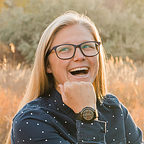A Guide to Designing for a Startup
Designed a user-focused app to assist users in finding relevant activities to participate in.
Overview
According to some authors, college students have as much as 40–50% of the time spent awake qualified as free time or leisure. What they do during that time most certainly has an effect on their well-being.
In an attempt to help people find ways to connect, try new things, and participate in activities that they enjoy, we’ve created an app to help them discover what is going on around them.
Bite-sized summary
- Realized the difficulties people have faced, and with the pandemic, more now than ever face, in feeling connected and finding relevant activities.
- Performed research on college campuses to discover ways students find out about activities.
- Defined requirements for our product to be successful.
- Designed and prototyped an app to allow people to find experiences they are interested in, with ways to invite others and vote on events.
- Performed user testing with our target audience and made iterations based on the feedback we received.
My Role
KazooDo is a startup company, which meant that I took on many roles as a product designer. My roles consisted of performing empathetic user research, storyboarding, prototyping, and user testing. The team I worked with consisted of a product manager and the lead developer.
1. The Challenge
Every week people spend many hours working, going to school, or being engaged in some form of other, often imposed, duty or activity. Yet, there is still a huge amount of time, according to some authors even 40–50% of the time spent awake, that is qualified as free time or leisure.
Free time, as opposed to time spent at work, in school, or college, gives us the opportunity to autonomously choose what we want to do, who we want to spend time with, and to choose the activities we want to engage in. Those choices might reflect our life goals and motivations, but most certainly have an effect on our well-being.
2. Research
With over 19.9 million college students throughout the United States, there is a huge demand for people seeking to find activities to participate in.
However, these events are not as easy to find as you might think. By talking with over a hundred college students, and visiting many college campuses ourselves, we found that students heavily rely on word of mouth, bulletin boards, or posters hanging up around campus to find things to do.
3. Design Goals & Process
We wanted to create an app where friends and family can connect, find engaging experiences, invite others to groups or lists, vote on experiences, share activity ideas, create their own experiences, and explore what is available around them.
After doing research on similar products such as Google Maps, Facebook events, and Groupon, I created a persona and came up with a few scenarios to journey map. After, I created a storyboard and began prioritizing features and functionalities.
4. User Testing & Feedback
I visited college campuses to test the sketches of the app with our target audience and got valuable feedback about features and usability. After testing on campus a few times, I made a digital version and began testing those, looking for consistencies in the user testing feedback. I made iterations from the feedback received and continued testing and iterating to create an enjoyable experience.
5. Design Iterations
After multiple rounds of digital designs and testing, we began to build the app and worked through basic scenarios of the user's experience. After our developer began coding the app, I worked hard to keep up with his pace, making sure to click through the screens he would be working on next to make sure I accounted for all the steps and pages.
Having built a few mobile apps before, I have come to realize that building components and using them throughout the designs makes small changes much easier. I created components for the majority of the parts so that I could update the master component and have the changes be implemented throughout. I also created a design library, selecting the typography, colors, and icons to keep consistency throughout the app.
6. Project Learnings
Simplified Delivery
With great power comes great responsibility. I had a lot of influence over what features and tools should be included in this product, and after designing some cool but complex features, I realized it was more important to deliver an easy experience. We saved some of the “cool” features for later versions in favor of a more simplistic approach that would allow users to quickly find experiences around them.
Rely on Your Team
My product manager and developer are very intelligent and have worked on very complex apps before. I worked closely with them to understand the feasibility of designs and to talk through the user flow to create a comprehensive prototype.
The app is still currently being built, tested, and developed.
